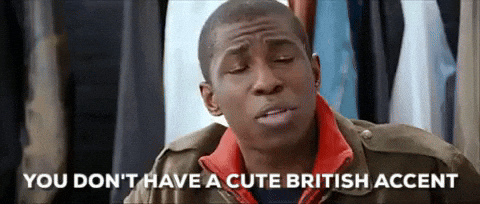- UniScoops
- Posts
- Should literature be written in standard English? ✍️
Should literature be written in standard English? ✍️
V – E + F = 2 🧮, and more ...
Howdy, this is UniScoops! We’re like a box of chocolates; you never know what you're going to get, but you can be sure it’ll be something amazing (unless you’re lactose intolerant).
So, without further ado…
Here’s a taste of what we’re serving today:
Should literature be written in standard English? ✍️
V – E + F = 2 🧮
PLUS: UMG vs. TikTok, How Spongebob Explored Existential Nihilism, and Periodic Table Podcasts.
ENGLISH
Should literature be written in standard English? ✍️
Has a parent or teacher ever told you to ‘speak English properly’? James Kelman, author of the 1994 novel How Late it Was, How Late, might have something to say about that…

How Late it Was, How Late (James Kelman)
Kelman’s novel is a 384-page-long stream of consciousness, written entirely in working class Scottish vernacular – hence the use of phrases such as ‘wee reccy’ and ‘wasnay wearing a tie’ in the extract above. The novel caused uproar by winning the Booker Prize in 1994: one of the members of the judging panel allegedly threatened to walk out if the book was chosen as the winner, citing it as ‘deeply inaccessible’. Literary critics, including Simon Jenkins and Kingsley Amis, also condemned the novel’s selection for such a prestigious prize. The perceived ‘problem’ with this book was that it was written in non-standard English, making it different from the literary norm. The question, then, is should authors write in standard English?
💡 Things to consider
Written vs spoken English: English is a richly diverse language. There are a multitude of different spoken dialects that English speakers might use or encounter, each with their own set of linguistic rules that are often as complex as the rules of standard English. However, we expect written English to be ‘standard’ and ‘proper’. Why is this? Should we be able to write in the same way as we speak?
Language and power: In the 1980s and 1990s, Norman Fairclough and other scholars advanced the theory of Critical Discourse Analysis, which views language as a form of social practice, and examines the link between prescriptivist values – the idea that there is a ‘correct’ and ‘incorrect’ way to use language – and societal power. In the 19th century, received pronunciation was established as the accent of the ruling classes, and thus different, non-standard accents and dialects were (and continue to be) perceived as less than. How do these prescriptivist values continue to influence our understanding of English today? What unconscious biases do we hold against people who speak or write English in a non-standard way?

What even is a “cute British accent” anyway?
Language as identity: In his acceptance speech for the Booker Prize, James Kelman accused his book’s opponents of linguistic snobbery. He declared, ‘My culture and my language have the right to exist, and no one has the authority to dismiss that.’ How does language shape our identity? Should anybody have the authority to regulate non-standard linguistic expression?
🔎 Find out more
James Kelman, How Late It Was, How Late (London: Secker & Warburg, 1994)
Norman Fairclough, Critical Discourse Analysis: The Critical Study of Language, 2nd edition (London: Routledge, 2018)
David Crystal Lecture: Academic English - Prof. David Crystal on standard vs. non-standard English (youtube.com)
MATHS
V – E + F = 2 🧮
Take a piece of paper, draw a bunch of dots on the paper and connect them up to split the page into regions, such that:
All vertices have a line going out of them, and
If any two lines cross, they intersect at a dot.
Any two dots can only have one line connecting them.

Then, count the number of dots (vertices) and call this number V. Count the number of lines (edges) and call this number E. Count the number of regions (faces) (INCLUDING THE OUTSIDE REGION) and call this number F. Then either V-E+F=2, or you’ve miscounted. This is called Euler’s Characteristic. Let’s prove it!

Easy.
Below is a proof by induction on the number of dots (vertices) V:
Let V=1: Then E=0 since a line (edge) goes between two dots, and F = 1 (the outside region).
Assume true for V = n.
Let V= n+1: Choose an edge connecting two different vertices, and contract them, i.e. make them be one vertex, connected to the same edges as each vertex respectfully was before. This decreases both V and E by 1, but F stays the same.
Then, since true for V=n, it is true for V = n+1.
Q.E.D. (this means you have completed the proof!)
💡 Things to consider
30 Proofs!: This is a statement that has upwards of 30 different proofs which you can explore further online. See if, for example, you can prove the statement by induction on the number of edges or induction on the number of faces.
The Euler Characteristic of a Surface: The fact that V-E+F is constant on a plane generalises to all 2D surfaces, e.g. spheres, toruses, two-holed toruses etc. But in these cases, V-E+F = 2 - the no. of holes in the object. So, it equals 2 for a sphere, 0 for a torus, -2 for a two-holed torus etc. These numbers are called the Euler characteristic of a surface.

We know you love it really.
Stretching a polyhedron?!: We can imagine a stretching a polyhedron onto the plane and now the number of faces, edges and vertices on the plane corresponds to the number of faces, edges, and vertices of the original polyhedron. So, this then allows us to quickly prove there are 5 platonic solids… suppose:
The faces have the same number of edges around them, n>2: i.e. nF = 2E
The vertices have the same number of edges into them, m>2: i.e. mV = 2E
Then plug these into Euler’s Characteristic: V-E+F=2 → 2E/m-E+2E/n =2 → 1/M+1/N=1/E+1/2 → 1/M+1/N > 1/2 for M,N>2
These give (M,N)=(3,3), (3,4), (4,3), (5,3) and (3,5) which correspond respectively to: tetrahedrons, octahedrons, cubes, dodecahedrons and icosahedrons. These in fact, correspond in order to the diagrams drawn at the beginning of this scoop!
🔎 Find out more

🍒 The cherry on top
🎶 UMG vs. TikTok: A couple weeks ago, we woke up to the unthinkable - millions of songs removed from past TikTok videos, and no way to add the music we want to new ones. This is because Universal Music Group (UMG) pulled all its songs from the platform. What does this mean, you may ask? Check out this LittleLaw article offering a whistle-stop tour of what’s going on. Great if you like Law or Business!
🧽 How Spongebob Explored Existential Nihilism: Existential nihilism is the philosophical theory that life has no objective meaning or purpose. This YouTube video explores how the beloved kids TV show Spongebob Squarepants touches on this theory in one of its episodes. A great, short video if you like Philosophy!
👨🔬 Periodic Table Podcasts: This cool website allows you to learn the story behind (almost) every element of the periodic table in short 5-10 minute podcasts! Great if you’re interested in Chemistry.

👀 Keep your eyes peeled for…
12th-13th February - University of Cambridge Exploring Legal Careers Webinar Series
12th-14th February: Christ’s College Cambridge Open/Taster Days
12th February - University of Oxford History Research Skills Workshop
13th February - University of Oxford History Workshop: Primary Sources
14th February - University of Oxford Maths Lecture: Logging the World
15th February - University of Oxford History Workshop: Big Concepts and Historiography
15th February - University of Cambridge Medicine Q + A for Teachers and Advisors
16th February - University of York Open Lecture: Caring for the Grey in LGBTQ+
16th February - University of Oxford History Admissions Test Workshop
16th February - University of Oxford Materials Science Online Open Day
17th February - University of Oxford Introduction to History of Art Workshop

🗳️ Poll
How was today's email?We'd love to hear your feedback! |
That’s it for this week! We’d like to thank this week’s writers: Eva Bailey (English) and Ben Watkins (Maths).
💚 Like UniScoops?
Forward this edition to someone who’d love to read it for extra kudos!
📢 Want to tell us something?
Reply to this email to tell us what you think about UniScoops, or to give us any suggestions on what you’d like to see.
🧐 New to UniScoops?
Get your weekly fix of academia with our fun, thought-provoking newsletter. No jargon, no fluff, just the good stuff. Subscribe today.
Reply